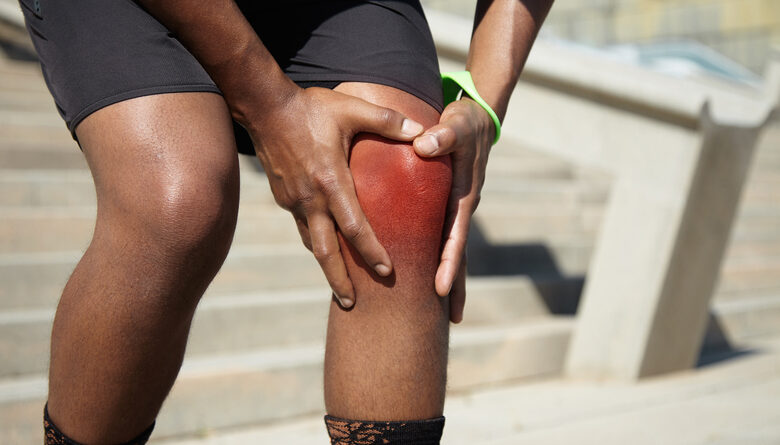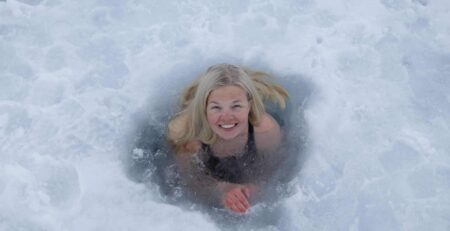You crushed your workout.
You pushed through that last set of squats, nailed that personal best on your run, or finally held that yoga pose.
But fast-forward 24 hours, and suddenly, walking down the stairs feels like a scene out of a slow-motion comedy. Your quads are on fire, your hamstrings scream, and you move like a newborn giraffe on roller skates.
Hello, Delayed Onset Muscle Soreness — or DOMS for short. We’ve all been there.
Now the fitness world is buzzing about cold plunges and cold water immersion as the ultimate antidote. But is it just a painful trend, or is there real science backing this frigid ritual? Let’s ditch the surface-level chatter and dive deep into the fascinating biological dance between freezing water and your aching muscles.
This isn’t just about “feeling good.” This is a story of inflammation, blood flow, and cellular cleanup crews. Let’s get into it.
Table of Contents
The DOMS Dilemma: Why Are You So Sore in the First Place?
To understand how a cold plunge helps, we first need to know what we’re dealing with and clear the myth. DOMS isn’t a build-up of lactic acid. It’s actually the result of microscopic damage to your muscle fibers. When you stress your muscles beyond what they’re used to, you create tiny tears in the tissue.
This damage triggers a complex and ultimately beneficial, inflammatory response. Your body sends a flood of immune cells, hormones, and nutrients to the area to start the repair process. This inflammation causes swelling and stimulates nerve endings, which you experience as pain, stiffness, and tenderness.
This is the crucial point: inflammation is not the enemy; it’s the first step of the healing process. But sometimes, this inflammatory response can be a little… overzealous. That’s where cold plunging for inflammation comes in.
The Cold Plunge Effect: Turning Down the Volume on Inflammation
Think of cold water immersion as a giant “chill out” button for your body’s inflammatory system. When you submerge yourself in icy water, several powerful things happen almost instantly.
1. Vasoconstriction: The Great Squeeze
As soon as your body hits cold water, your peripheral blood vessels (the ones near your skin and in your muscles) constrict dramatically. This is called vasoconstriction. It’s your body’s survival instinct, pulling blood away from the surface to protect your core temperature and vital organs.
- How this aids muscle recovery: This “squeeze” physically pushes fluid out of your muscle tissue. This helps reduce the swelling and edema that contribute to that tight, puffy feeling of DOMS. Picture this as wringing out a sponge filled with inflammatory byproducts.
2. Slowing the Metabolic Rate
Cold temperatures slow down cellular activity. For your damaged muscles, this is like hitting the pause button on the metabolic chaos happening inside. It lowers the tissue’s demand for oxygen and slows the release of inflammatory chemicals.
A 2015 scientific study in the Journal of Physiology explored how cold water immersion after exercise can attenuate the inflammatory response by reducing the production of pro-inflammatory cytokines (like IL-6) and cellular stress factors.
When inflammation is controlled, soreness fades faster, and recovery starts sooner.
3. The Flush: A Supercharged Clean-Up
Once you step out of the icy water and your body warms up after the plunge, something amazing happens — vasodilation. Blood vessels expand again, sending a rush of oxygen-rich blood back to your muscles.
This “rebound flush” acts like a deep clean for your tissue:
- It delivers fresh nutrients needed for muscle repair.
- It sweeps away cellular debris and metabolic waste left over from your workout.
- It restores normal function faster, so you’re ready for your next session.
This dynamic “squeeze and release” cycle is what makes cold plunges such an effective recovery tool.
But Wait, There’s a Catch: The Strength & Growth Debate
Here’s where it gets tricky. Remember how we said inflammation helps trigger muscle repair? That very inflammatory process that cold exposure helps manage is also a key signal for muscle growth (hypertrophy). This has led to a hot debate: Does regular cold plunging after resistance training blunt your long-term gains?
The science is still evolving, but here’s the current consensus:
If your primary goal is maximizing muscle size and strength, you might want to be strategic. The anti-inflammatory effect could potentially interfere with the anabolic (muscle-building) signaling pathways. A famous study published in the Journal of Physiology found that cold water immersion after resistance training attenuated long-term gains in muscle mass and strength.
So, should you skip the plunge if you lift weights? Not necessarily. It’s about context.
- For the Elite Athlete: If you’re training multiple times a day or in a high-volume competition phase, your goal is rapid muscle recovery to perform again soon. In this case, the benefits of reduced soreness and faster functional recovery likely outweigh any potential minor blunting of hypertrophy.
- For the Weekend Warrior: If you’re lifting 3-4 times a week with adequate rest, a cold plunge can be a fantastic tool to manage soreness without significantly impacting your long-term progress, especially if you time it right.
So, it’s not about avoiding the cold; it’s about using it wisely.
The Goldilocks Protocol: Timing, Temperature, and Duration
Want to get the full benefits of the cold plunge without sabotaging your gains? Stick to these research-backed guidelines:
- Timing is Everything: For pure recovery, the window seems to be within the first hour after your workout. If you’re concerned about muscle growth, some experts suggest waiting 2-4 hours post-workout to allow the initial inflammatory signals to do their job.
- Temperature: The sweet spot is between 50°F to 59°F (10°C to 15°C). You don’t need a near-freezing slurry to get the benefits.
- Duration: 10 to 15 minutes is the magic number. Shorter might not be effective, and longer doesn’t necessarily provide more benefit and increases the risks.
Bonus tip: Prepare well for your plunge, and combine it with deep breathing to calm the shock response and improve circulation even more. Learn how to get started with
Final Thoughts: The Smart Way to Use Cold Plunges for Muscle Recovery
Cold plunges aren’t just a trend. They’re a scientifically grounded method to help your muscles recover, inflammation subside, and your body feel ready to move again.
When done right, they reduce soreness and swelling, improve blood circulation, accelerate recovery between sessions, and boost overall performance and resilience.
The key is to be intelligent about its use. Understand that it works by modulating inflammation—a process that is both the cause of your soreness and a driver of long-term adaptation.
Use them strategically — not religiously. After an exceptionally grueling workout? Go for it. Between two big training days? Absolutely. After every single gym session when chasing muscle size? Maybe skip that.
Your body needs both challenge and recovery — the cold plunge just happens to be one of the coolest tools to balance the two. Learn more about why freezing your muscles helps with healing in our guide.












Leave a Reply